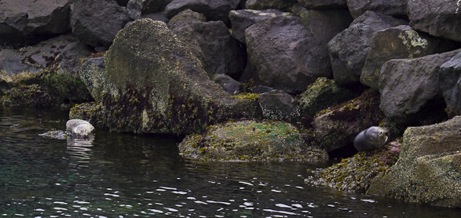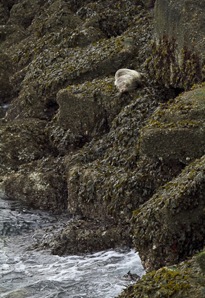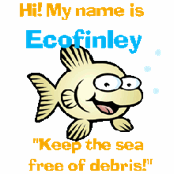Ebb and flow determines haul out patterns of pups
Oct/24/10 05:24 AM

In the photo above, taken at late afternoon’s high tide, you can see Queen Latifah (on the right) who has just hauled out, along with another yet unidentified pup (on the left) who had been hauled out since the prior high tide at 7am. In the opposite photo, you can see the pup sleeping on the same rock at low tide - quite a disturbing sight to onlookers who worry that the pup is stranded.

There are many factors which determine the haul out patterns of seals - and not all seals haul out at high tide. There are some haul outs that are only accessible at low tide. Other sites are accessible at all times and access is not affected by tidal influence. So, patterns appear to be site specific, but time of day, time of season, air temperature, wind and precipitation are all factors in addition to tidal heights. You can read one of many scientific papers on haul out patterns here.
UPDATE: The unidentified pup here came to be known as ET.







